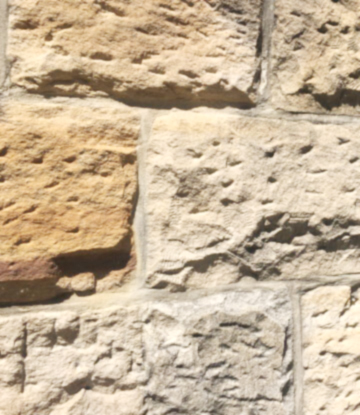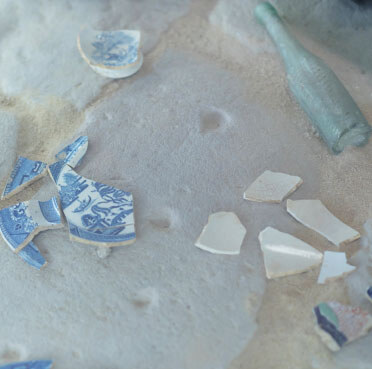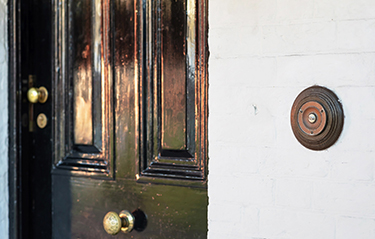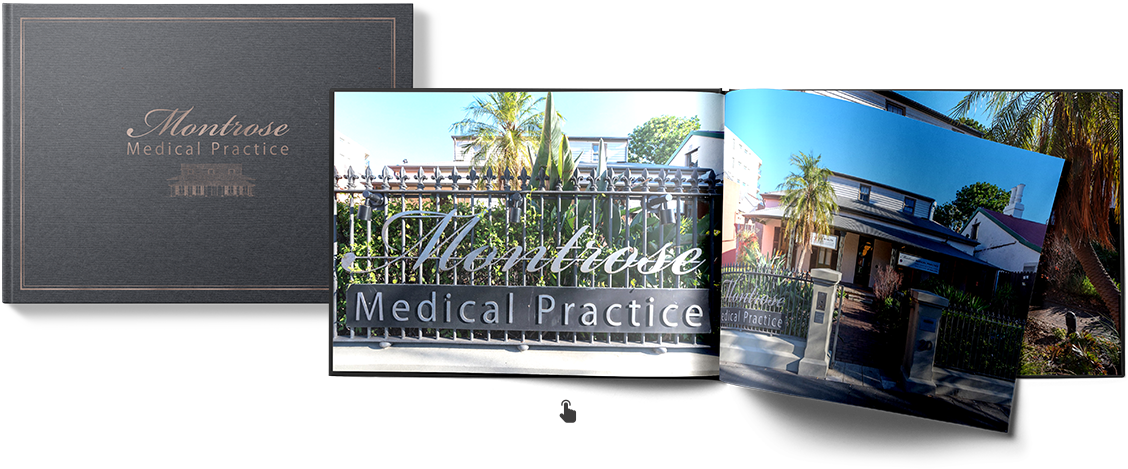At Montrose Medical Practice, we are very proud to continue honouring the long and rich history of the building that stands at 20 Glebe Point Road, Glebe, which has over 122 years’ connection with the medical profession.Montrose was built in 1868-9 by George Wigram Allen on land leased by the Church of England. It is not entirely clear who lived at Montrose when it was first built, but there is evidence that it was leased by a society or organisation and that James Robinson was there in 1871.

By 1875, Edward Goddard had moved into Montrose. He had multiple occupations throughout his life including agent, wine merchant, draper and warehouseman with his wife and youngest surviving children. Edward lived at Montrose with his wife and youngest children, 20-year-old twins Ada Grace and Arthur James Elliott and teenagers Percy and Stanley. You may notice in the current Montrose Treatment Room, you can see ‘Ada 5/11/75’ carved into a window pane, which was preserved during the 2008-9 restorations of Montrose. Also found and preserved during this restoration were some porcelain plates and pottery, dating back to the 1820s when the rear of Montrose was thought to be part of a pottery workshop. You can see these on display in consultation room 8, which has a glass floor showcasing these artefacts and the stable which lies underneath. Part of the stable wall can also be seen in consultation room 9 and on the staircase at the back of the building.
Since 1899, the building has had almost continuous use as a doctors’ residence and often dual use as a surgery and residence. The first physician recorded as living at Montrose was Dr Arthur Annesley West. He leased the residence in 1878 and his younger brother, Dr William Augustus West, practiced at Montrose from 1898 until his death in 1905. Dr Arthur West graduated from medicine in Dublin in 1869, travelled to Sydney aboard the Strathnaver in 1871 and began practicing at Montrose in May 1878. He was an honorary physician with Sydney Hospital and the Hospital for Sick Children on the corner of Wigram and Glebe Roads. After Arthur’s death, his brother William took over the practice, moving to Montrose in 1898.
Following Dr West’s tenure at Montrose, Dr Stewart Arthur Smith was the next medical practitioner to occupy 20 Glebe Point Road. Dr Smith graduated from the University of Sydney in 1903 and became the first director of post-graduate medicine at Sydney University, President of the Royal Australasian College of Physicians and a committee member of the National Heart Foundation.
In 1915, Montrose was taken over by John William Van Rees Hoets, in partnership with Dr Stewart Smith and, in the 1930s, Dr Theodore Potts, beginning the dynasty of the Potts family doctors. Dr Theodore Potts drove a horse-drawn buggy to visit patients and, during his time at Montrose, was Lodge doctor for the Druids. Dr Theodore Potts was joined by his son Dr Theodore Kenneth (Ken) Potts following his graduation in 1944. In 1978 Dr Ken Potts purchased Montrose from the Church of England and, in 1991, the house was inherited by his son, Dr Theodore David Potts. Then, from 1996 to 2006, the house was occupied by the Australasian College of Natural Therapies who carried out training and teaching in natural health.
There are a number of nearby buildings that have been neighbours of Montrose since the early days. The former Glebe Hotel, across the road at 37 Glebe Point Road, now Badde Manors café, was constructed in 1864. The house next door at 22 Glebe Point Road was constructed in the 1860-1870s.
In 1910, the Sydney United Friendly Society Dispensary was located across the road at 33 Glebe Point Road, which helped to make Montrose a very favourable location for a doctors’ practice. The initials of the Friendly Society can be seen above the awning on the façade of the building. Patients, particularly workers and the less well off, could pay a subscription to the Friendly Society, a pre-curser to modern-day health funds, and obtain the medications inexpensively. These patients would visit the doctors at Montrose to obtain their prescriptions and then take their pill or medicine bottles across the road to the dispensary to be refilled.
From 2008-2009, a project was undertaken to remove the 1922 addition from the front of Montrose and restore the heritage of the building. A 20-month project was undertaken by VANOVAC TUON Architects and heritage consultant Helen Wilson. The project involved heritage analysis, design, and conservation work to both the interior and exterior of the building. Upon completion in 2009, the elegance and simple beauty of Montrose revealed the house once again, contributing to the streetscape of Glebe Point Road.
In 2014, Montrose Medical Practice underwent extensions at the rear of the building, the distinctive architecture combining modern and classic elements. This new space provides extra rooms for GP consultations as well as the Montrose Allied Health Clinic which can be found on the first floor.








